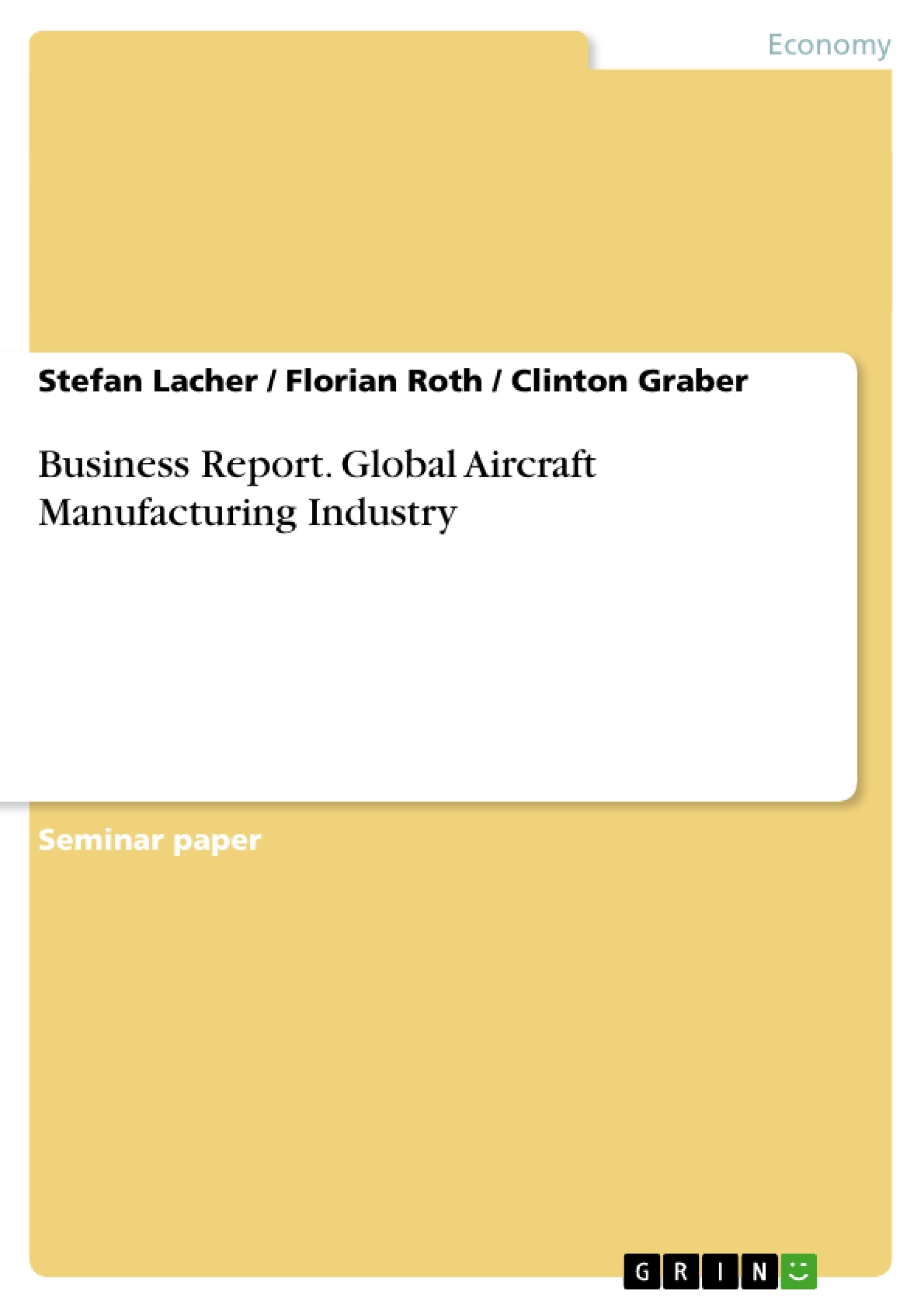The purpose of this report is to analyse the attractiveness of the aircraft manufacturing industry. Research for this report includes information from journal articles, newspapers, and analysis of actions of the main competitors. The major findings indicated that the aircraft manufacturing industry has undergone extensive changes since the late 1990’s. Despite the negative effects of environmental change like the terrorism acts of September 11, 2001 and diseases like SARS on air travel, the aircraft industry is still attractive for new entrants. The long-term growth rate caused by globalisation, governmental support, and general need for more mobility show that there is still a large demand for aircrafts of all sizes. Due to the industry’s attractiveness, it is highly recommendable to enter the industry. Companies considering this should be aware of the high volatility in the market as well as the huge capital investments needed for the development process. [...]
Inhaltsverzeichnis (Table of Contents)
- Executive Summary
- Introduction
- Description of the Aircraft Manufacturing Industry and its structure
- Suppliers
- Civil Aircraft Manufacturers
- Aircraft Leasing Companies
- Airlines
- Airports
- End user/Customer
- Industry Competition
- Major Competitors
- Airbus
- Boeing
- Bombardier
- Comparison of the main competitors
- Competitive Forces Analysis
- Rivalry in the industry
- Substitutes
- New Entrants
- Supplier's Power
- Buyer's Power
- Result of the Five Forces Analysis
- Major Competitors
- Driving Forces
- Lifestyle and Social Characteristics
- Product Innovation and Technology
- Globalisation
- Government
- Internet
- Key Success Factors
- Prospects for the industry
Zielsetzung und Themenschwerpunkte (Objectives and Key Themes)
This report aims to analyze the attractiveness of the aircraft manufacturing industry. It explores the industry's structure, competitive forces, and driving forces, considering the impact of globalization and technological advancements. The report offers recommendations for companies considering entry into this dynamic market.
- Industry structure and value chain analysis
- Competitive landscape and key players
- Driving forces shaping the industry
- Key success factors for market success
- Prospects for the industry's future
Zusammenfassung der Kapitel (Chapter Summaries)
The report begins by outlining the structure of the aircraft manufacturing industry, encompassing suppliers, manufacturers, leasing companies, airlines, airports, and end users. It delves into the competitive landscape, focusing on major players such as Airbus and Boeing, and analyzes the industry's competitive forces.
Further chapters explore the driving forces shaping the industry, including globalization, technological innovation, government policies, and consumer trends. The report concludes by identifying key success factors and providing insights into the future prospects of the aircraft manufacturing industry.
Schlüsselwörter (Keywords)
The primary keywords and focus topics of this report include aircraft manufacturing, industry analysis, competitive forces, globalization, technological innovation, market attractiveness, key success factors, and industry prospects. The report utilizes a range of information sources, including industry journals, newspapers, and competitor analyses to provide a comprehensive overview of this dynamic industry.
- Quote paper
- Stefan Lacher (Author), Florian Roth (Author), Clinton Graber (Author), 2004, Business Report. Global Aircraft Manufacturing Industry, Munich, GRIN Verlag, https://www.grin.com/document/25483




